Have you ever wondered about those dark, jelly-like mushrooms in your hot and sour soup? Those delightfully crunchy, ear-shaped fungi floating in Asian dishes are wood ear mushrooms—one of the oldest cultivated mushrooms in the world, with a cultivation history dating back to 600 A.D. in China. These fascinating mushrooms aren't just culinary treasures; they're nutritional powerhouses packed with antioxidants, fiber, and medicinal properties that have made them staples in traditional Chinese medicine for over 2,000 years.
Wood ear mushrooms (Auricularia auricula-judae) stand out from typical mushrooms with their unique gelatinous texture, ear-like appearance, and mild flavor that absorbs surrounding tastes like culinary sponges. Whether you're a mushroom enthusiast curious about expanding your palate, a home grower looking for beginner-friendly cultivation projects, or a health-conscious foodie seeking functional ingredients, wood ear mushrooms offer something special.
From their impressive cardiovascular benefits to their easy cultivation requirements, these remarkable fungi deserve a place in both your garden and your kitchen. This comprehensive guide explores everything you need to know about wood ear mushrooms—from identification and health benefits to growing techniques and delicious recipes. Let's discover why this ancient Asian delicacy is gaining worldwide recognition as a must-have functional food.
What Are Wood Ear Mushrooms? Understanding This Ancient Delicacy
Wood ear mushrooms are edible fungi characterized by their distinctive ear-like shape, gelatinous texture, and dark brown to black coloration. Unlike traditional mushrooms with caps and stems, wood ear mushrooms grow as thin, rubbery clusters directly on decaying hardwood logs and tree trunks, creating formations that genuinely resemble human ears attached to trees.
The Many Names of Wood Ear Mushrooms
These fascinating fungi go by numerous names worldwide:
- Wood ear or tree ear (most common English names)
- Black fungus or black wood ear (referring to their dark color)
- Cloud ear fungus or jelly ear (describing texture)
- Kikurage mushroom (Japanese name)
- Auricularia auricula-judae (scientific name)

Physical Characteristics
Wood ear mushrooms possess unique features that make them instantly recognizable:
Appearance:
- Ear-like or lobed shape (1-3 inches wide)
- Dark brown to nearly black color when mature
- Light beige when young, deepening with age
- Thin, translucent, jelly-like texture
- Velvety surface on one side, smooth on the other
Texture:
- Rubbery and soft when wet
- Crunchy and slightly chewy when cooked
- Gelatinous consistency that resists breaking under pressure
- Returns to original shape after squeezing
Flavor Profile:
- Mild, earthy taste with minimal mushroom flavor
- Nearly neutral, allowing them to absorb surrounding flavors
- Slightly sweet undertones when fresh
This unique combination of characteristics makes wood ear mushrooms incredibly versatile in cooking, similar to tofu's ability to take on flavors. For those interested in other mushrooms with unique textures, our trumpet mushrooms guide explores another variety with impressive culinary applications.
10 Remarkable Wood Ear Mushroom Health Benefits Backed by Science
Wood ear mushrooms have been used in traditional Chinese medicine for centuries, and modern research is now validating many of their remarkable health-promoting properties. These fungi are true nutritional powerhouses despite their minimal calorie content.
1. Exceptional Antioxidant Power
Wood ear mushrooms rank among the most antioxidant-rich fungi available, containing high levels of polyphenols, flavonoids, and phenolic compounds that protect your cells from oxidative stress and free radical damage.
Key antioxidants include:
- Selenium: Potent antioxidant supporting heart, joint, and immune health
- Polyphenol compounds: Linked to reduced risk of cancer and chronic diseases
- Flavonoids: Powerful plant compounds that fight inflammation
These antioxidants work synergistically to combat aging, reduce chronic inflammation, and protect against degenerative diseases.
2. Supports Heart Health and Lowers Cholesterol
Multiple studies suggest that wood ear mushrooms promote cardiovascular health through several mechanisms:
Cardiovascular benefits:
- Lower LDL (bad) cholesterol levels
- Improve blood circulation
- Reduce blood clotting and platelet aggregation
- Contain compounds like adenosine that prevent heart attacks and strokes
- Natural blood thinning properties
Research in rabbits showed that wood ear mushroom consumption significantly decreased both total and LDL cholesterol, suggesting potential benefits for human heart health.
3. Boosts Immune System Function
Wood ear mushrooms contain powerful immunomodulatory polysaccharides, particularly beta-glucans, that enhance your body's natural defense mechanisms.
Immune-boosting properties:
- Stimulate phagocytes (immune cells that engulf harmful particles)
- Enhance the body's ability to fight infections
- Support overall immune system regulation
- Provide antimicrobial protection against pathogens
One 2015 study found that wood ear mushrooms effectively blocked the growth of Escherichia coli and Staphylococcus aureus, two common disease-causing bacteria.
4. Promotes Digestive Health and Gut Microbiome
Wood ear mushrooms are excellent sources of prebiotic fiber that nourishes beneficial gut bacteria, promoting a healthy microbiome essential for overall wellness.
Digestive benefits:
- High dietary fiber content supports regular bowel movements
- Prebiotics feed beneficial gut bacteria
- Prevent constipation naturally
- Support immune function through gut-immune connection
- Aid nutrient absorption
The fiber in wood ear mushrooms passes through your stomach unchanged, reaching the colon where it encourages healthy bacterial growth and maintains bowel regularity.
5. May Protect Brain Health and Cognitive Function
Emerging research suggests wood ear mushrooms may offer neuroprotective benefits that could help preserve cognitive function as we age.
Test-tube studies revealed that wood ear mushrooms inhibit beta secretase activity—an enzyme that releases beta-amyloid proteins linked to Alzheimer's disease and other degenerative brain conditions. While human research is needed, these preliminary findings are promising for brain health support.
6. Supports Liver Health and Detoxification
Wood ear mushrooms may safeguard your liver from damage caused by certain substances and environmental toxins.
In rat studies, a solution of water and powdered wood ear mushrooms helped reverse and protect the liver from acetaminophen (Tylenol) overdose damage. This suggests potential hepatoprotective properties that could support natural detoxification processes.
7. Helps Regulate Blood Sugar Levels
Hot water extracts of wood ear mushrooms have shown promise in maintaining steady blood glucose levels after meals, preventing the spikes that can be problematic for people managing diabetes or prediabetes.
This blood sugar-regulating effect makes wood ear mushrooms a potentially valuable addition to balanced diets for those concerned about metabolic health.
8. Anti-Inflammatory Properties
The compounds in wood ear mushrooms possess natural anti-inflammatory effects that may help reduce chronic inflammation—a root cause of numerous health conditions including arthritis, heart disease, and autoimmune disorders.
By reducing chronic inflammation, wood ear mushrooms support overall well-being and may help prevent various inflammatory conditions.
9. Rich in Essential B Vitamins and Minerals
Wood ear mushrooms provide impressive amounts of vitamins and minerals despite being low in calories (only 20-25 calories per serving).
Per 100 grams of raw wood ear mushrooms:
- Vitamin B1 (Thiamin): 7% daily value
- Vitamin B2 (Riboflavin): Supports energy metabolism
- Vitamin B5 (Pantothenic acid): Crucial for red blood cell formation
- Folate (B9): Essential for cell growth and DNA synthesis
- Copper, Iron, Magnesium, Selenium, Zinc: Vital minerals for bodily functions
For those interested in other nutrient-dense mushroom varieties, our king trumpet mushroom benefits guide explores another nutritional powerhouse from the oyster mushroom family.
10. Weight Management Support
With their high protein content (approximately 15% by weight), low calorie count, minimal fat, and substantial fiber, wood ear mushrooms are excellent for weight management and building lean muscle mass.

Growing Wood Ear Mushrooms at Home: A Beginner's Guide
One of the most exciting aspects of wood ear mushrooms is how accessible they are for home cultivation. These fungi are surprisingly forgiving and can produce impressive yields with relatively simple setups.
Why Grow Wood Ear Mushrooms?
- Beginner-friendly: Less prone to contamination than many gourmet varieties
- Fast colonization: Thin, fast-moving mycelium colonizes substrates quickly
- Multiple harvest methods: Can be grown on logs outdoors or substrate bags indoors
- Sustainable: Grows on agricultural waste and recycled materials
- Cost-effective: Fresh wood ears are expensive; growing your own saves money
- Year-round cultivation: Indoor setups allow continuous production
The Lykyn Smart Mushroom Grow Kit provides automated environmental control that can be adapted for wood ear mushroom cultivation, maintaining the high humidity these mushrooms love.
Optimal Growing Conditions
Wood ear mushrooms thrive in specific environmental parameters:
Temperature: 50-60°F (10-15°C) for colonization; slightly warmer for fruiting
Humidity: 80-90% relative humidity (higher than most mushrooms)
Air circulation: Moderate airflow prevents contamination
Light: Minimal light needed; indirect ambient light sufficient
pH: Slightly acidic substrate preferred
Cultivation Method 1: Log Cultivation (Outdoor)
This traditional method mimics how wood ear mushrooms grow naturally and can produce harvests for 3-5 years from a single log.
Step 1: Select and Prepare Logs
- Choose freshly cut hardwood logs (oak, maple, beech, or birch work best)
- Optimal size: 3-4 feet long, 4-6 inches in diameter
- Cut during dormant season (late fall to early spring)
- Let logs rest 1-3 weeks before inoculation (but not longer than 1 month)
- Soak logs in clean water for 24 hours before inoculating
Step 2: Inoculate with Spawn
- Drill holes 1-1.5 inches deep in a diamond pattern (4-6 inches apart)
- Insert wood ear mushroom spawn (plug spawn or sawdust spawn work well)
- Seal holes with food-grade wax to prevent contamination and moisture loss
- Work in clean conditions to minimize competitor fungi
Step 3: Incubation Period
- Stack logs in shaded area away from direct sunlight
- Keep logs moist but not waterlogged
- Allow 6-12 months for mycelium to fully colonize the logs
- Some white mycelial growth may be visible on log surfaces
Step 4: Fruiting and Harvest
- After incubation, lean logs against poles or fence (70cm above ground)
- Water logs heavily several times daily (impossible to overwater!)
- First fruiting typically occurs after good rainfall
- Harvest when mushrooms reach desired size (usually 3-4 weeks after pins appear)
- Logs can produce 4-6 flushes over several years
Pro tip: Wet, rotting logs provide the best atmosphere for wood ear growth. Don't worry about logs appearing overly decomposed—this is exactly what wood ears love!
Cultivation Method 2: Sawdust Substrate (Indoor)
Indoor cultivation offers more control and faster results than log cultivation.
Prepare Sawdust Substrate:
Mix hardwood sawdust with nutritional supplements:
- 75-80% hardwood sawdust (oak, beech, poplar)
- 10-15% wheat bran or rice bran
- 5-10% gypsum or agricultural lime
- Water to achieve 60-65% moisture content
Sterilization:
- Fill heat-resistant bags with substrate mixture
- Sterilize in pressure cooker or autoclave (15 PSI, 90 minutes)
- Allow to cool completely in sterile environment
Inoculation:
- In clean workspace (or laminar flow hood if available), inoculate cooled substrate with wood ear grain spawn
- Mix spawn thoroughly throughout substrate (10-20% spawn to substrate ratio)
- Seal bags and place in dark area at 50-60°F
Colonization:
- Thin, fast-moving wood ear mycelium will colonize bags in 2-4 weeks
- Watch for complete white coverage throughout substrate
- Move to fruiting conditions once fully colonized
Fruiting:
- Cut X-shaped slits in bags or remove from bags entirely
- Increase humidity to 85-90%
- Provide indirect light and fresh air exchange
- Mist heavily multiple times daily
- Harvest when ears reach full size
For beginners interested in automated cultivation systems, our best mushroom grow kit for beginners guide explores modern growing solutions that simplify the process.
Harvesting Wood Ear Mushrooms
Best practices:
- Harvest when mushrooms are nicely hydrated (ideally after rainfall or heavy misting)
- Use sharp knife to cut at the base where attached to substrate
- Can gently twist off by hand, being careful not to damage remaining mycelium
- Harvest entire cluster including roots to prevent interference with next flush
- Store fresh mushrooms in refrigerator in paper bags (use within 3-5 days)
Wood ear mushrooms can be dried for long-term storage. Simply lay them on screens in a food dehydrator at low temperature (95-115°F) or air-dry in well-ventilated area.

Cooking with Wood Ear Mushrooms: Techniques and Recipes
Wood ear mushrooms' neutral flavor and distinctive crunchy texture make them incredibly versatile in the kitchen. They act like flavor sponges, absorbing whatever seasonings and broths surround them while maintaining their satisfying crunch.
Preparing Dried Wood Ear Mushrooms
Most wood ear mushrooms outside Asia are sold dried. Proper rehydration is essential:
Rehydration Steps:
- Place dried wood ears in bowl of warm water
- Soak 15-20 minutes (or cold water for 1 hour for better texture)
- Mushrooms will expand dramatically (up to 5-8 times original size)
- Drain and rinse thoroughly under running water
- Rub gently to remove any dirt or debris from folds
- Trim off any tough woody portions
- Slice or use whole depending on recipe
Important: Never soak wood ears too long (over 24 hours) as they may develop toxins. Always use rehydrated mushrooms promptly.
Best Cooking Methods
Hot and Sour Soup: The classic use for wood ear mushrooms. Add rehydrated mushrooms during last 10 minutes of cooking to maintain their crunchy texture.
Stir-Fries: Cut into strips and add toward the end of stir-frying. They pair beautifully with garlic, ginger, soy sauce, and sesame oil.
Dumplings and Spring Rolls: Finely chopped wood ears add wonderful texture to vegetable fillings.
Salads: Blanch briefly, then toss with citrus dressing, sesame oil, and fresh vegetables for refreshing Asian-style salads.
Braised Dishes: Their ability to absorb flavors makes them perfect for long-braised dishes where they soak up rich, savory sauces.
Medicinal Broths: Traditional Chinese medicine uses wood ear mushrooms in tonics and healing soups.
Flavor Pairing Suggestions
Wood ear mushrooms complement:
- Aromatics: Garlic, ginger, scallions, cilantro, star anise
- Sauces: Soy sauce, oyster sauce, black vinegar, sesame oil, chili oil
- Proteins: Tofu, chicken, pork, shrimp, beef
- Vegetables: Bok choy, napa cabbage, bamboo shoots, carrots, snow peas
- Noodles: Rice noodles, wheat noodles, glass noodles
Cooking Tip
Avoid overcooking wood ear mushrooms. Extended cooking destroys their beneficial nutrients and their signature crunchy texture. Add them toward the end of cooking for best results.
For more mushroom recipe inspiration, check out our black pearl mushroom recipes guide, which features cooking techniques applicable to various specialty mushrooms.
Foraging Wood Ear Mushrooms in the Wild
Wood ear mushrooms are relatively easy to identify and forage, making them accessible for beginners interested in wild mushroom hunting.
Where and When to Find Wood Ears
Habitat:
- Dead or dying hardwood trees (oak, elm, beech, elder)
- Fallen logs and branches
- Damp, shaded forest areas
- Throughout North America, Europe, and Asia
Season:
- Most abundant after rainfall in spring and fall
- In mild climates, can appear year-round
- Peak fruiting during wet, humid conditions
Identification Features
Visual characteristics:
- Distinctive ear or cup shape
- Dark brown to reddish-brown color
- Thin, rubbery, gelatinous texture when wet
- Grows directly on wood (no stem)
- Often in clusters or overlapping groups
Spore print: White (important for positive identification)
Safety Considerations
While wood ear mushrooms are generally safe and have no deadly look-alikes, always practice safe foraging:
- Never consume mushrooms unless 100% certain of identification
- Take spore prints when uncertain
- Consult field guides specific to your region
- Learn from experienced foragers
- Watch out for brown witch's butter (Phaeotremella foliacea), which grows in similar locations but isn't toxic—just less desirable
When in doubt, leave it out. The safest option for enjoying wood ear mushrooms is purchasing verified spawn and growing your own using the Lykyn Smart Mushroom Grow Kit or other cultivation methods.
Nutritional Profile: What Makes Wood Ears So Healthy?
Despite their low calorie content, wood ear mushrooms pack impressive nutritional density:
Per 100 grams (dried):
- Calories: ~50-80
- Protein: ~15g (excellent plant-based source)
- Fiber: ~8-10g (promotes digestive health)
- Fat: Minimal (<1g)
- Carbohydrates: ~10-15g
Key micronutrients:
- B vitamins (B1, B2, B5, B9)
- Iron (prevents anemia)
- Copper (antimicrobial properties)
- Selenium (antioxidant support)
- Potassium (heart health)
- Calcium (bone strength)
- Magnesium
- Zinc
This nutrient profile makes wood ear mushrooms particularly valuable for vegetarians, vegans, and anyone seeking plant-based nutrition that rivals animal proteins.
Frequently Asked Questions About Wood Ear Mushrooms
Are wood ear mushrooms safe to eat?
Yes, wood ear mushrooms are completely safe when properly identified and prepared. They've been consumed safely for over 2,000 years in Asian cultures. However, always cook them thoroughly—never eat wood ears raw. Ensure you're not soaking them for extended periods (over 24 hours) as this can lead to bacterial growth.
What do wood ear mushrooms taste like?
Wood ear mushrooms have a very mild, slightly earthy flavor with minimal mushroom taste. Their appeal comes primarily from their unique crunchy, gelatinous texture rather than strong flavor. This neutrality makes them perfect for absorbing the flavors of sauces, broths, and seasonings in dishes.
How long do wood ear mushrooms last?
Fresh wood ear mushrooms last 3-5 days refrigerated in paper bags. Dried wood ears stored in airtight containers in cool, dark places can last 1-2 years. Once rehydrated, use within 24 hours. Never leave cooked dishes containing wood ears overnight, as they can develop toxins.
Can I grow wood ear mushrooms without logs?
Absolutely! While log cultivation is traditional, sawdust-based substrate bags work excellently for indoor cultivation. Mix hardwood sawdust with wheat bran and gypsum, sterilize, inoculate with spawn, and maintain high humidity. This method produces faster results than logs and allows year-round cultivation.
What's the difference between wood ear and cloud ear mushrooms?
Cloud ear mushrooms (also called silver ear or white wood ear) are a different species (Tremella fuciformis) that are smaller, thinner, and lighter in color than wood ear mushrooms. Both belong to the jelly fungi family and share similar culinary uses, but cloud ear is particularly prized in Chinese medicine and desserts for its "qi and blood" supplementing properties.
Do wood ear mushrooms have any side effects?
Wood ear mushrooms are generally safe for most people. However, they have natural anticoagulant (blood-thinning) properties, so individuals taking blood-thinning medications should consult healthcare providers before consuming large amounts. Some people may experience mild digestive discomfort if eating excessive quantities due to high fiber content.
Can wood ear mushrooms be used medicinally?
Traditional Chinese medicine has used wood ear mushrooms for centuries to alleviate symptoms of jaundice, sore throats, and various inflammatory conditions. Modern research supports some of these traditional uses, particularly their cardiovascular, antioxidant, and immune-supporting properties. However, they should complement, not replace, medical treatment.
Where can I buy wood ear mushroom spawn?
Quality wood ear mushroom spawn can be purchased from reputable online mushroom suppliers, specialty mycology retailers, or Asian agricultural suppliers. Look for grain spawn or plug spawn specifically labeled for wood ear or Auricularia species. Always verify you're getting spawn from trusted sources to ensure proper species identification.
Featured Snippet Summary
Wood ear mushrooms (Auricularia auricula-judae) are edible jelly fungi with distinctive ear-like shapes and gelatinous texture. Rich in antioxidants, B vitamins, iron, and dietary fiber, they offer impressive health benefits including heart health support, immune system enhancement, brain protection, and liver support. Low in calories (50-80 per 100g dried) but high in protein (15%), they're excellent for weight management. Easy to grow on hardwood logs or sawdust substrate with 80-90% humidity and cool temperatures (50-60°F). Popular in Asian cuisine for their crunchy texture that absorbs surrounding flavors, wood ears are safe when properly prepared and have been cultivated since 600 A.D.
Start Your Wood Ear Mushroom Journey Today
Wood ear mushrooms represent a perfect intersection of culinary tradition, nutritional excellence, and accessible home cultivation. These ancient fungi offer modern solutions for health-conscious eaters, sustainable food producers, and adventurous home cooks seeking new flavors and textures.
Whether you're drawn to their impressive antioxidant content, intrigued by their 2,000-year medicinal history, or simply curious about their unique crunchy texture, wood ear mushrooms deliver on every level. Their beginner-friendly cultivation requirements make them perfect first projects for aspiring mushroom growers, while their versatility in the kitchen ensures you'll never run out of delicious ways to enjoy your harvest.
Ready to grow your own wood ear mushrooms? The Lykyn Smart Mushroom Grow Kit makes cultivation effortless with automated humidity and temperature control that adapts to various mushroom species. Start with easy-growing varieties and expand your repertoire as your confidence grows.
For more mushroom cultivation guides, cooking inspiration, and growing tips, explore our complete collection of mushroom resources and recipes. Join the growing community of home mushroom cultivators discovering the joy of homegrown fungi and the incredible flavors they bring to every meal. Your first harvest of fresh wood ear mushrooms could be just weeks away!

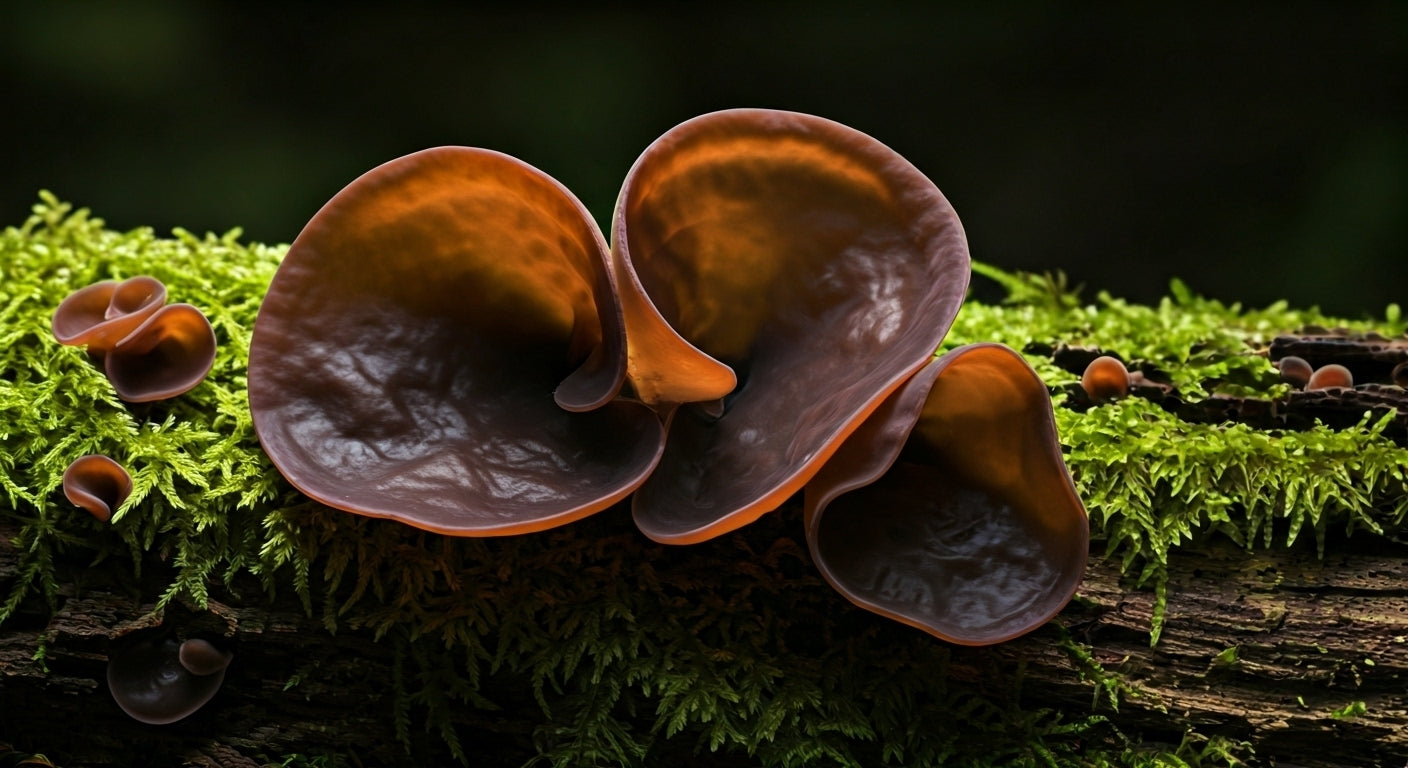




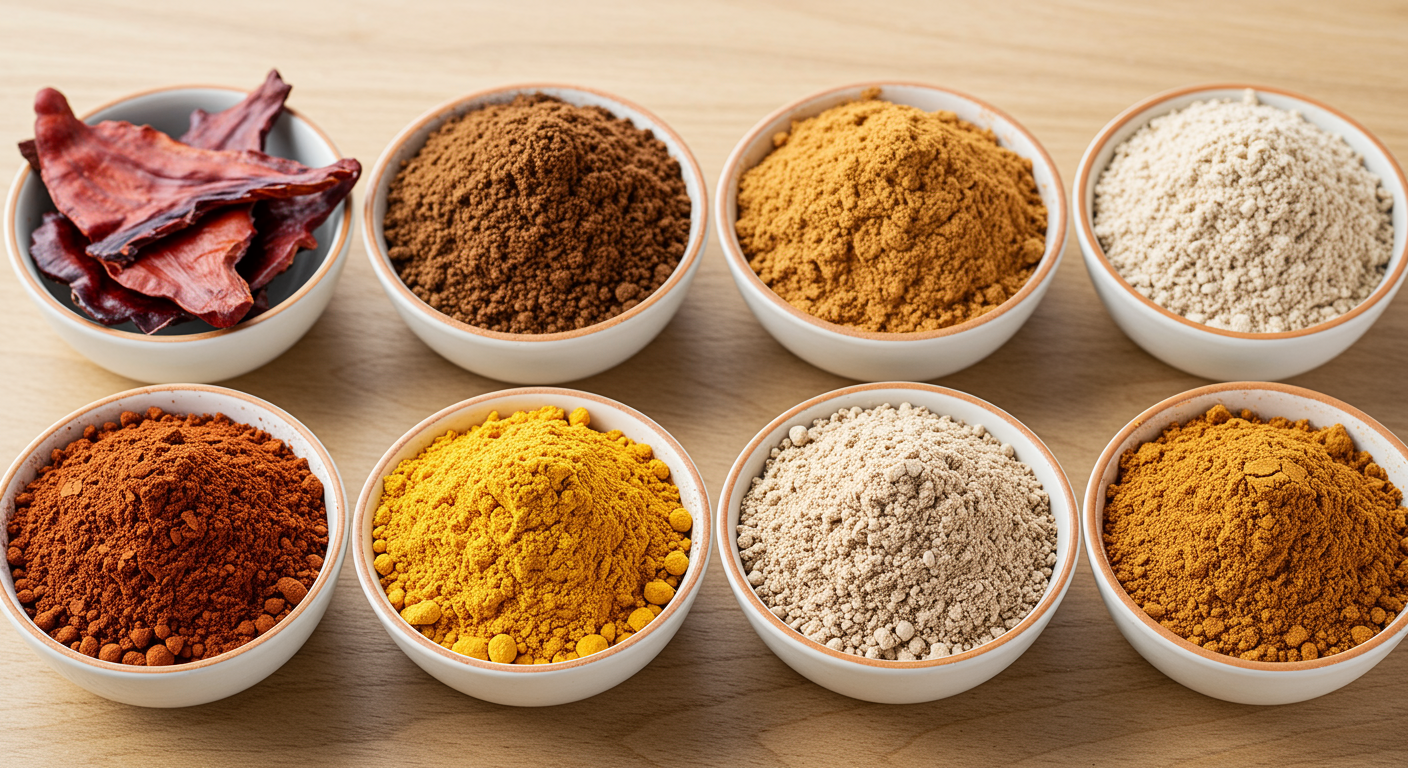

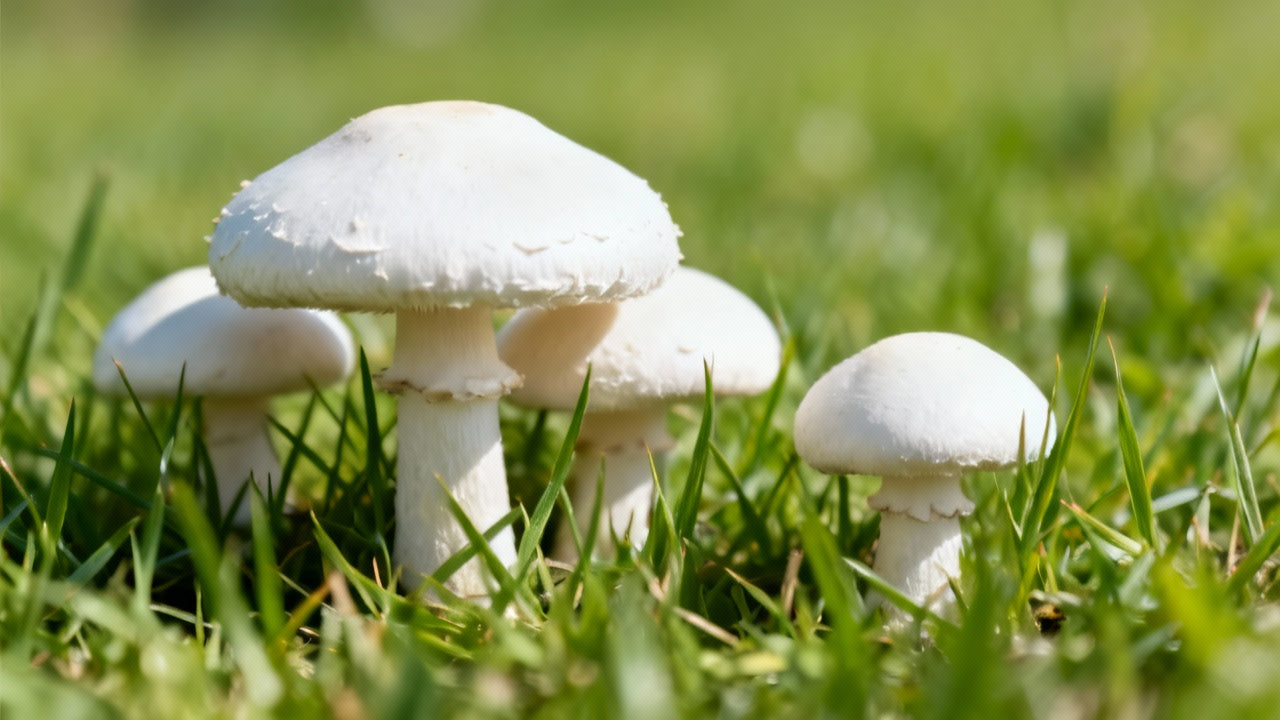
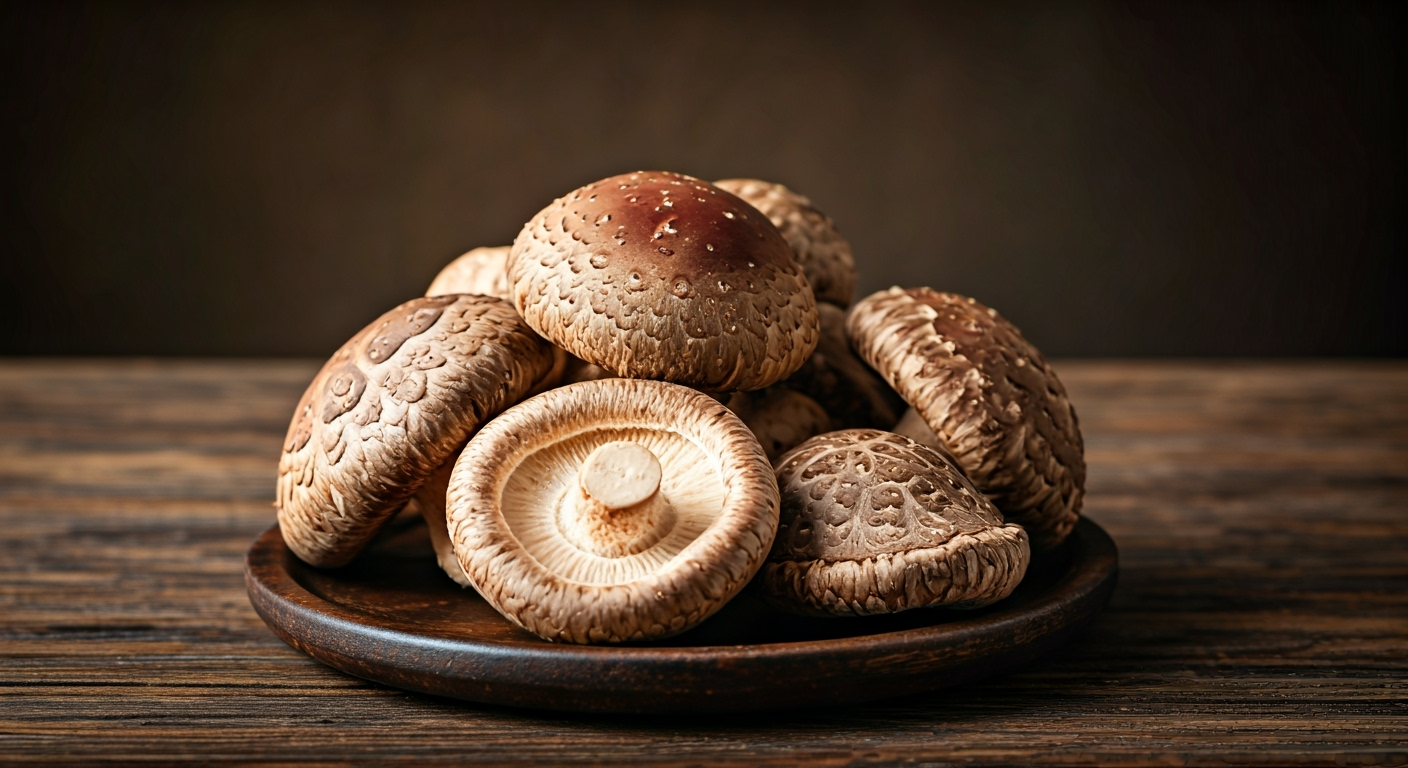
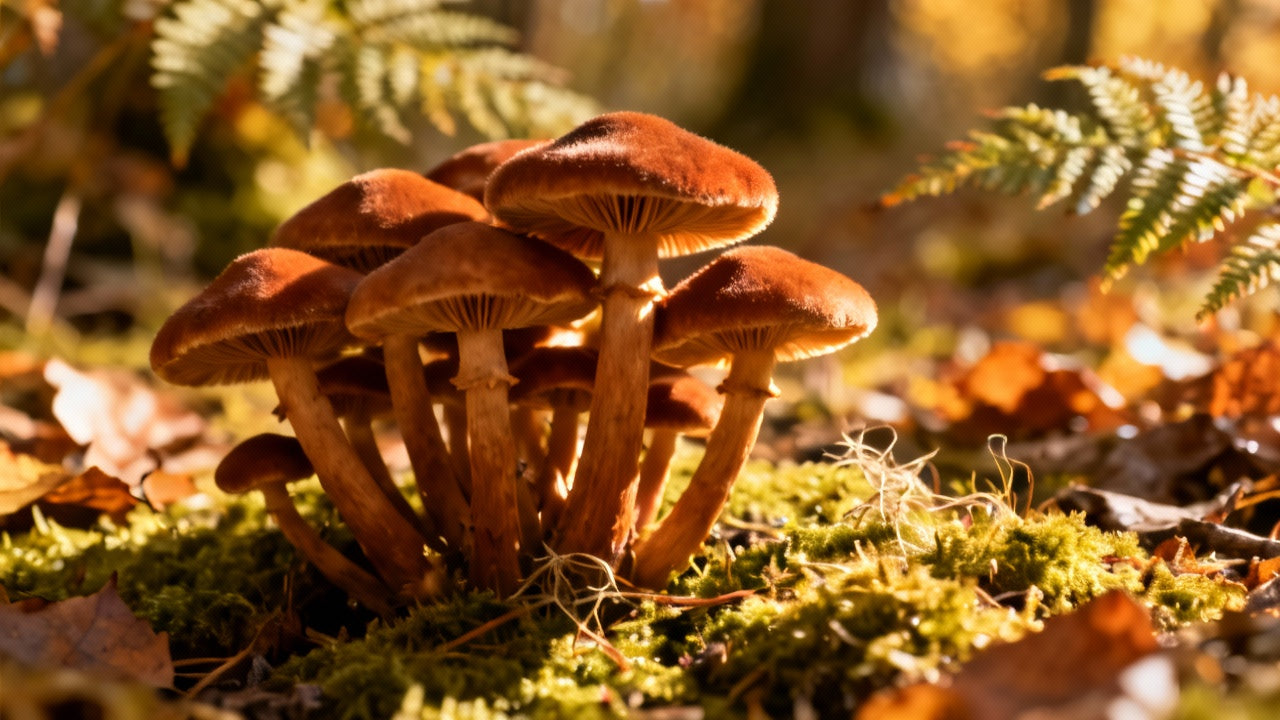
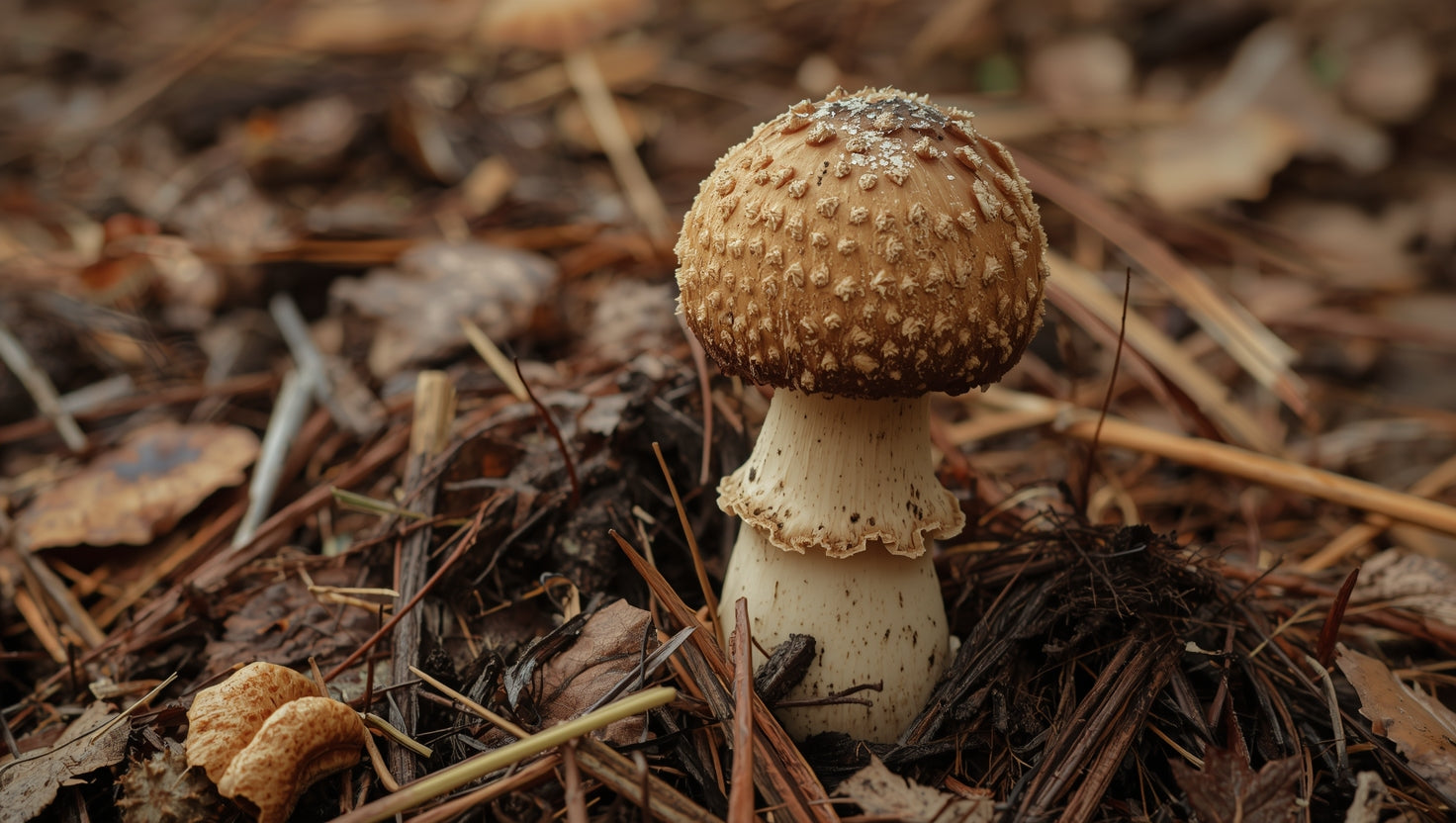
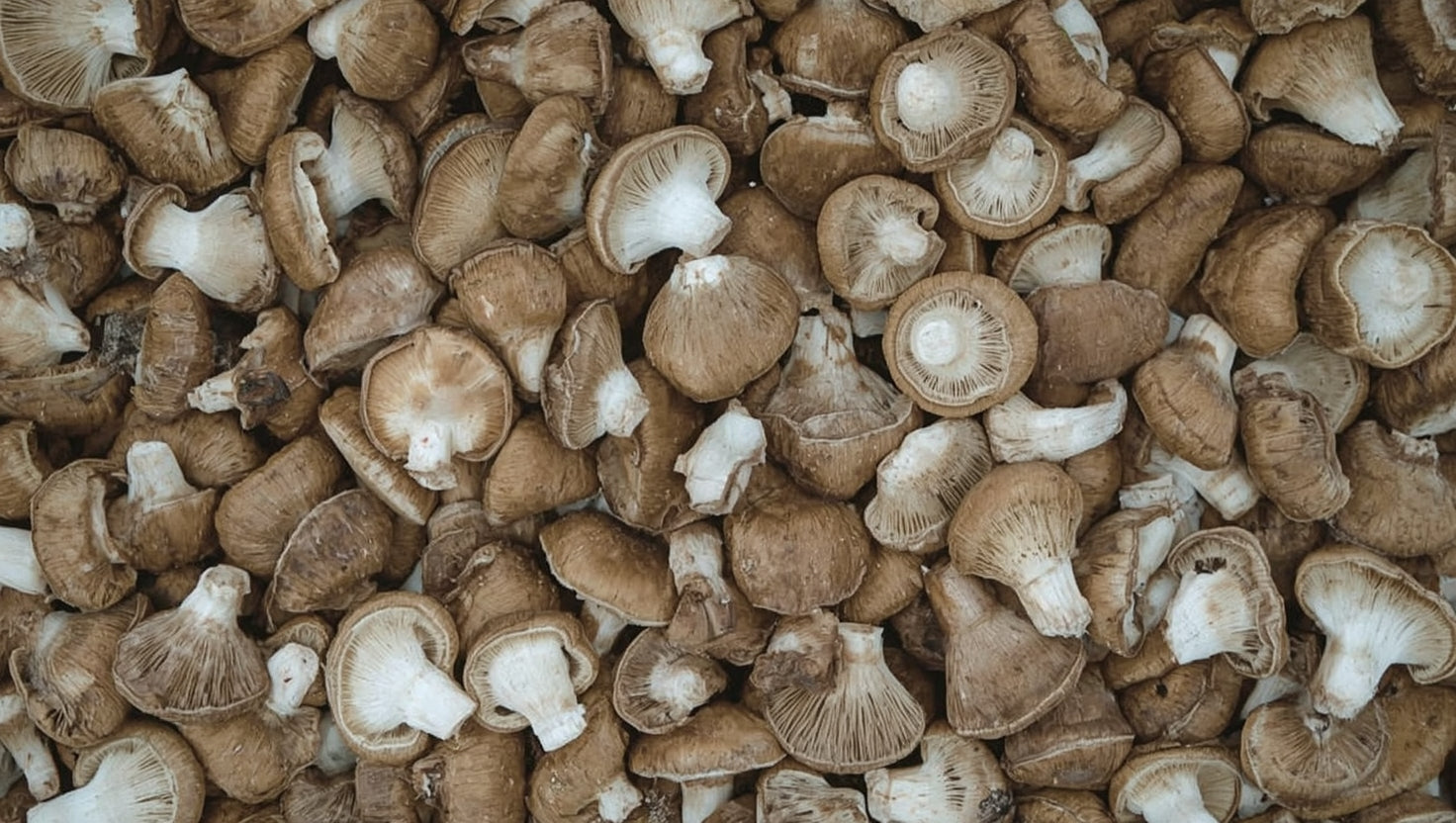

Share:
Thoughtful Presents for Plant Lovers Everywhere: Gifts That Genuinely Delight Green Thumbs
White Button Mushrooms: Your Complete Guide to Nutrition, Benefits, and Culinary Uses